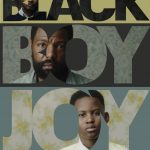Many of my clients write short screenplays and last year I helped develop nine short scripts for Film Independent’s Project:Involve seven of which were greenlit and showcased at the Los Angeles Film Festival. One of these, To the Bone written by Erin Li and Silka Luisa, has been accepted to Slamdance. We’re gearing up for this year’s program so short films are on my mind.
Shorts are a great way to develop your writing skills and can be an excellent calling card if produced. Short film screenplays are a unique form of storytelling that are not simply pared down features but have their own specific rules and structure. Because they are short they have the ability to deliver a quick, powerful emotional punch. In many ways this gives them greater impact than a feature which has to tease out the same affect over 90+ minutes. In order to write an effective short film it helps to be aware of the aspects of screenwriting that are unique to short films. Here are some character guidelines to keep in mind (my next post will take a look at structure).
• Protagonist’s Goal
Even in a short the plot of the story is driven by what the protagonist wants. This is their goal. As in a feature their goal needs to be compelling, urgent and something we can get behind. We want to emotionally engage the audience so they are invested in the story and want to see the outcome. This doesn’t mean their goal has to be big like saving the world. Sometimes smaller, more internal goals have greater emotional impact partly because they are more relatable.
• Backstory
The challenge in creating a compelling character in a short is you don’t have the luxury of 30 pages to set up your protagonist for the audience. Depending on the length of your short you have only a handful of pages and sometimes even less. This means you don’t have time for elaborate backstory or exposition (which is like a dead weight in a short). So how do you convey important information about your character? Economically, visually and through action and relationships. If there is something we must know about your character’s past or current situation then find ways to convey this with a visual reference. This could be something in the setting, a unique visual attribute (clothes, hair) or gesture. We learn the most about a character through their actions. So what they are actually doing and who they are doing it with tells us a lot. This is your toolbox. Use it to tell us about your character economically without having to involve a whole lot of backstory and exposition which you don’t have time for.
• Protagonist’s Arc
Even in a short screenplay the main character needs to grow and change over the course of the story. Unlike a feature you don’t have 90 pages to develop and arc a character so the shift they make needs to be smaller and not feel like a huge leap. Big changes are just too much to incorporate in such a short time. So what you’re looking for here are protagonists who have shifts in perspective, see things in a new light, and undertake a new or different action. They may have a shift based on the consequences of their actions or we might see a change in their relationships as a result what’s occurred in the story.
Of course this comes with its own challenge which is that these smaller shifts tend to be more internal than external so the trick here is to find visual ways of externalizing the internal change.
• Secondary Characters
While a feature length narrative may have myriad characters a short film needs to focus on the protagonist and a limited number of secondary characters. These are your antagonists, love interests, best friends, parents, boss, co-workers etc. There just isn’t enough time to service more than three-four secondary characters (generally less) and it’s important to decide what characters you absolutely need in order to tell your story. Key here is incorporating secondary characters whose relationship with the protagonist helps us to understand who they are, their goal and their transformation. For example the main character’s relationship with their sibling/parent/friend can tell us whether they are kind, helpful, disconnected, emotionally aloof, self involved etc. traits that would be hard to establish without seeming them in relationship with another character.
• Theme
Knowing what your story is about and what you are trying to say as a writer is vital even in a short screenplay. One of the ways to think about this is what your protagonist learns over the course of the story tells us what the piece is really about. Once again this doesn’t need to be a huge, earth shaking idea or shift but it needs to be clear and we need to understand your point of view and why you’re telling this particular story. Using the protagonist to convey the theme is an effective way to do this. Shorts that are “about” something are more likely to connect with the audience and resonate more deeply.
If you’ve written a short I’d love to hear your comments, ideas and suggestions.



